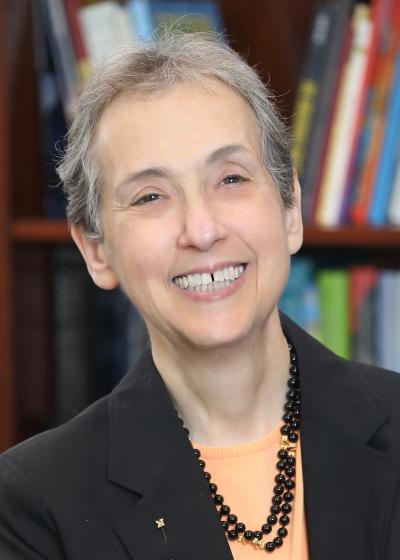From the Deputy Director for Intramural Research
NIH Is Home to Life-long Learners
BY NINA F. SCHOR, DDIR

It is hard to believe that the fall season of 2024 is upon us. This, as it were, is the “Back to School” issue of the NIH Catalyst. Welcome back to all who took some well-deserved time during the summer months to relax and recharge, to enjoy the company of friends and family, and to connect with nature, the arts, personal hobbies, and whatever else makes you human and keeps you going!
This issue pays tribute, in part, to the discoverers and inventors of the past who have fueled some of the innovation that has improved our ability to understand and treat illness. As many of you know, I have spent my clinical life as a child neurologist and my research life as a pharmacologist. When I read through the content outline for this issue, I was reminded of how many medical challenges we face involve interactions of the immune system and endogenous or environmental triggers of it with the nervous system.
For example, many years after researchers at NIMH described the association of recent strep throat and a Tourette-like syndrome in children, neurologists are still debating whether a disorder called PANDAS and the related disorder PANS exist as discrete pathophysiological entities. The possible connection is intriguing. However, confounders include observations that strep throat is so common in children, that association is not causality, that the vast majority of children with Tourette syndrome do not have recent strep infection, and that there is a well-established familial predisposition to Tourette syndrome across generations. What’s going on here?
My own research has focused on the childhood cancer called neuroblastoma. Neuroblastoma affects the developing neural crest and consists of sympathetic nervous system cells that fail to fully mature, retaining their proliferative potential. Between 2% and 4% of children with neuroblastoma get a neurological syndrome called opsoclonus myoclonus, also known as dancing eyes–dancing feet syndrome. Opsoclonus myoclonus associated with neuroblastoma is further associated with developmental and behavioral regression and persists even after the neuroblastoma is cured.
This movement disorder is also associated with some adult cancers, albeit rarely. But in those cases, antibodies aimed at cancer antigens that cross-react with normal brain tissue in the cerebellum are often identified. Such is not the case with children with neuroblastoma and opsoclonus myoclonus. Yet immunomodulatory therapies do seem to decrease the severity of the syndrome and improve the outcome for these children.
When I was a graduate student at Rockefeller University (New York), I took a course called “Cellular Immunology,” taught by Shu Man Fu (now professor emeritus at the University of Virginia) and Ralph Steinman (who died of pancreatic cancer in 2011). I remember thinking how phenomenological immunology was, with cells categorized based on what they did in a particularin vitro assay and antigens classified based on their association with cellular proliferation, differentiation, or senescence, respectively.
We have come a long way. There are mechanisms and genes and tools with which to understand such phenomena, of which we never could have dreamt when I was a student. But the story of the PANDAS and the PANS, and the challenge of opsoclonus myoclonus, tells us just how far we have yet to go. With NIMH, NINDS, NIAID, NCI, and all our sister institutes in close proximity, what better place than the NIH to unravel the next set of interdisciplinary mysteries that link the immune system with the nervous system.
One of my roles as the DDIR is to provide opportunities for NIH scientists to collaborate and to be exposed to new ideas that can open new pathways of investigation. So, it is only fitting that this “Back to School” issue of the Catalyst also highlights the NIH Research Festival on September 23–25, a scientific immunotherapy symposium celebrating the career of Steven Rosenberg on September 26–27, and the 30th anniversary year of the Wednesday Afternoon Lecture Series (WALS), which runs from September through June—all rich fodder for insight and inspiration. I do hope you can take advantage of all that these opportunities have to offer.
This page was last updated on Thursday, December 5, 2024
